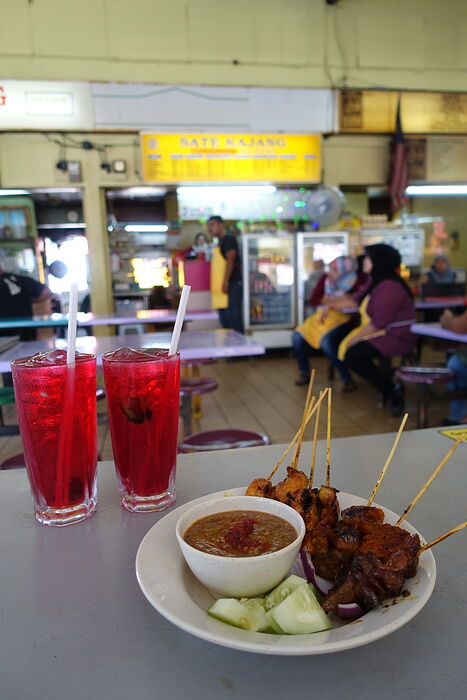Anyone who’s been to a Malaysian restaurant anywhere in the world would have probably tasted the Malaysian “sate” (sometimes spelt “satay”, and pronounced “SAH-tay”) - skewers of marinated, barbecued chicken, beef or mutton, served with a spicy, peanutty dip.
In Malaysia itself, the best sates supposedly come from the small town of Kajang, about 15 miles from Kuala Lumpur. So how did the famous Kajang sate originate? According to local food chroniclers, sate (which is a Javanese dish) was first popularised in Kajang by a Javanese immigrant, Tasmin bin Sakiban, in 1917. He was assisted by his younger brother, Rono bin Sakiban.
But Kajang old-timers often talked about another Javanese immigrant, Wak Jono Darmon (who later took on the Malay name, Haji Mohamad Noor) whom they credited as being the earliest sate seller in Kajang. Haji Mohamad Noor was the father-in-law of Rono bin Sakiban. But it was the Sakiban brothers who were instrumental in making Kajang sate famous.
The Sakiban brothers sold their sates at a Chinese-owned coffeeshop, Kedai Kopi Ban Seng since the 1940s, usually in the evenings and into the late-night, barbecuing and serving their sates under gas-lamps.
Tasmin bin Sakiban passed his business down to his son, Haji Amir, whose business, upon the latter’s death many years later, was inherited by his son-in-law, Haji Samuri. It was under Haji Samuri’s watch that Kajang sate came unto its own - attracting sate connoisseurs from all over Malaysia to Kajang, for a taste of the legendary Kajang Sate.
I first tasted Haji Samuri’s sate in the late-70s. It was the best sate I’d ever had then. Even today, after having travelled all over Malaysia, Singapore and Indonesia - I still thought that Haji Samuri’s Kajang sate remained up there amongst the best.
So, we were back in Kajang this morning and Haji Samuri was one of our definite stops. It’s a large 3-storey building these days, serving hundreds of customers every single day.
Haji Samuri offers rabbit meat and fish fillet sates these days, besides the usual chicken, beef and mutton ones. Their sate peanut dipping sauce was very much how I remembered it ever since my first time there in the 1970s.
We also ordered the ketupat nasi - compressed squares of boiled rice wrapped in woven palm leaves. These provide the carbs for the sate meal, besides the obligatory raw wedges of cucumber and raw onions.
Address
Sate Kajang Haji Samuri
Lot 1, 2 & 3 Bangunan Dato Nazir
Jalan Kelab, 43000 Kajang
Selangor
Tel: +60387371853














